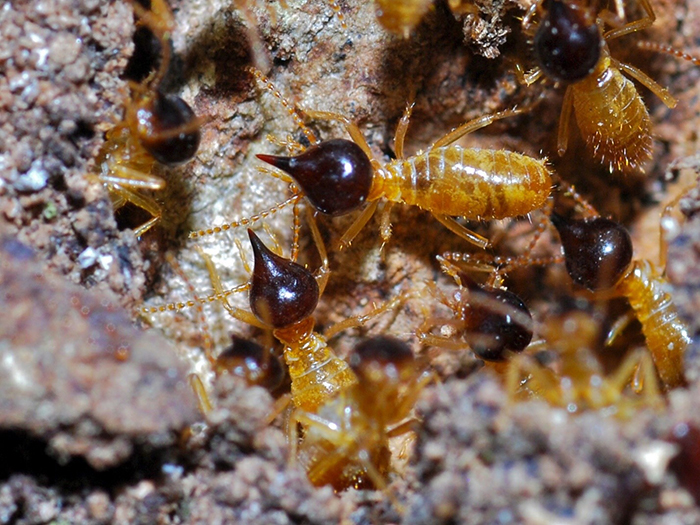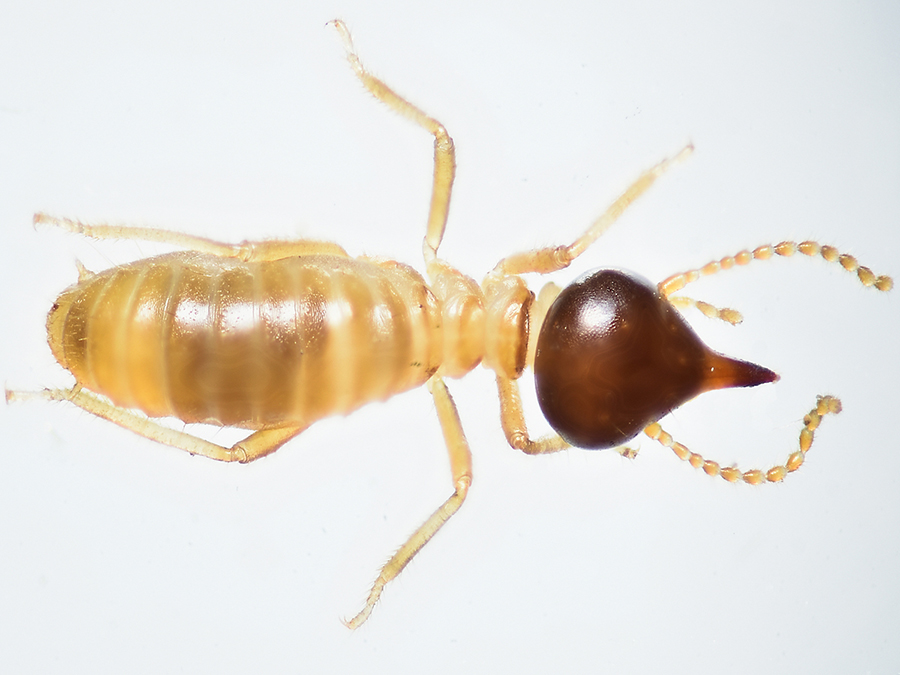Conehead termites
SCIENTIFIC NAME
Nasustitermes corniger
FACTS, IDENTIFICATION & CONTROL
APPEARANCE
Conehead termite is a common name based on the dark, cone-shaped head of termite soldiers. Soldiers constitute a large portion of the total conehead colony, about 20 – 30% of the colony. Only 1–2% individuals of subterranean and drywood colonies are soldiers. Another way which can distinguish conehead is observing their tunnels. Subterranean termites usually build mud tunnels whereas conehead termites build bigger and larger tunnels. Another distinctive thing is appearance of their nest. Conehead termites usually build their nests in open areas, near trees and look like a large, dark – brown “scabrous” round or oval shaped ball.
ACTIVITY, FOOD AND HABBIT
Conehead termite is an invading pest which appears in Florida in 2001 and it can be found in many states of the South. Conehead termite is a drywood termite species disposed in Caribe and other tropical countries in Central American such as Panama.
A new conehead termite colony may not be found after many years but as colony ages and matures, visible nests are constructed above ground. The above – ground nests may be hidden in trees, bushes or in premises.
Conehead termite’s favorite food are these things containing cellulose. They commonly invade in and eat trees, bushes, roots, building woods, furniture, fences, rail and paper products.
REPRODUCTION
A mature termite colony includes both reproductive queens and males. Moreover, alates will be born and play role in extending colonies as they develop wing, fly from the nest , mate and find place to establish new colonies.

SIGN OF INFESTATION
The sign of conehead termite infestation contain seeing termite colony; a large system with many tunnels from their nest to food sources; unusual appearance of termite soldiers; and the density of soldiers is more than other termites.
MORE INFORMATION
The preventions of conehead termite commonly start by inspecting thoroughly which are conducted by pest control operations. Based on the results of inspections, some methods will be applied to wipe out termite colony and have thorough treatments on trees, stumps, structures, foraging tunnels and any other congregation of conehead termites that are found.
Experts will also provide some prevention methods in order to prevent conehead termite as well as others. They are:
- Pruning shrubs and trees and keeping them at least 1 – 1.5 m away from your home.
- Not leaving mulch surrounding your home.
- Keeping firewood, scrap lumber, cardboard or any other cellulose – based materials as far as your home as possible.
- Ensuring that gutters and downspouts direct water well away far from your home.


